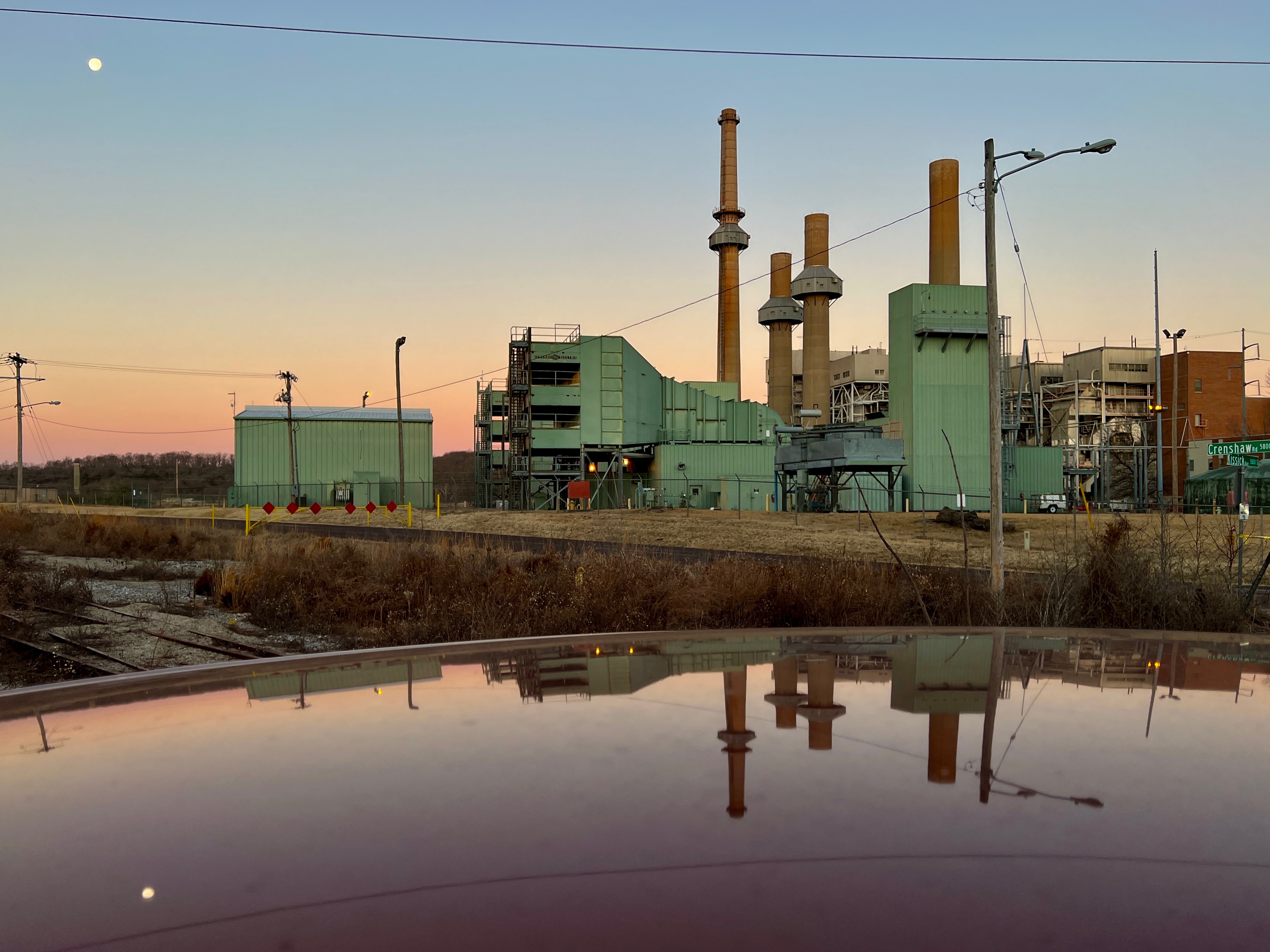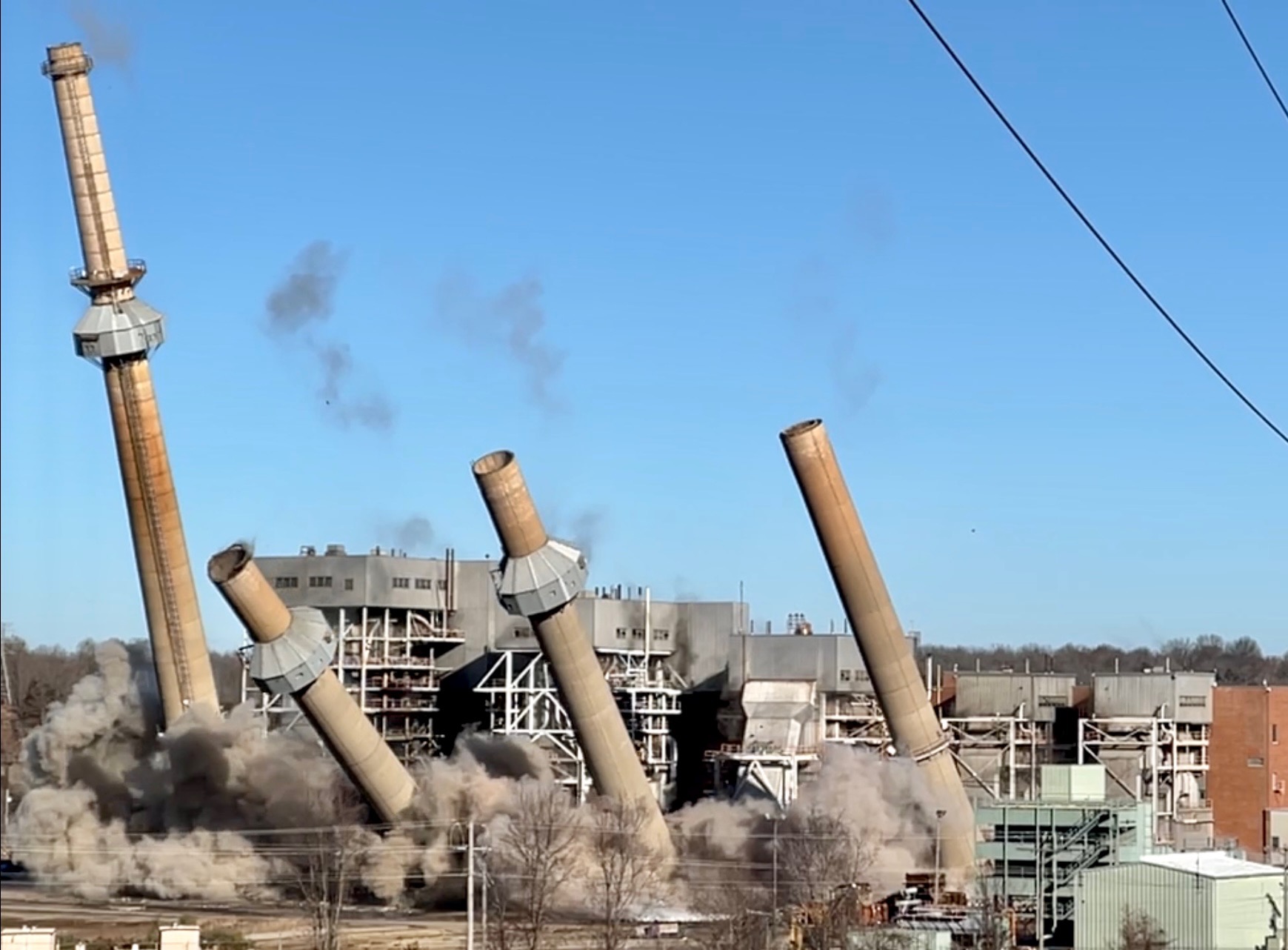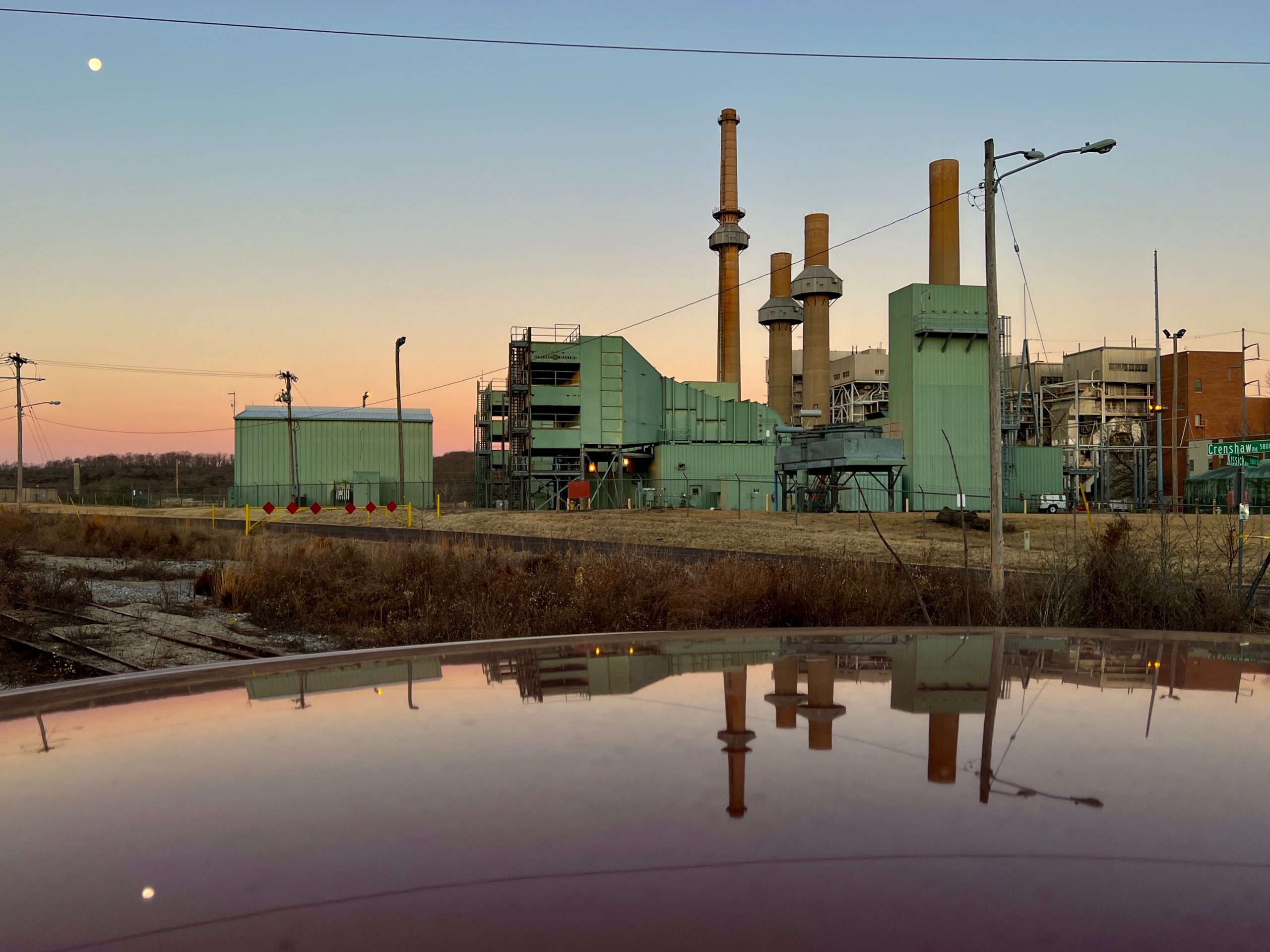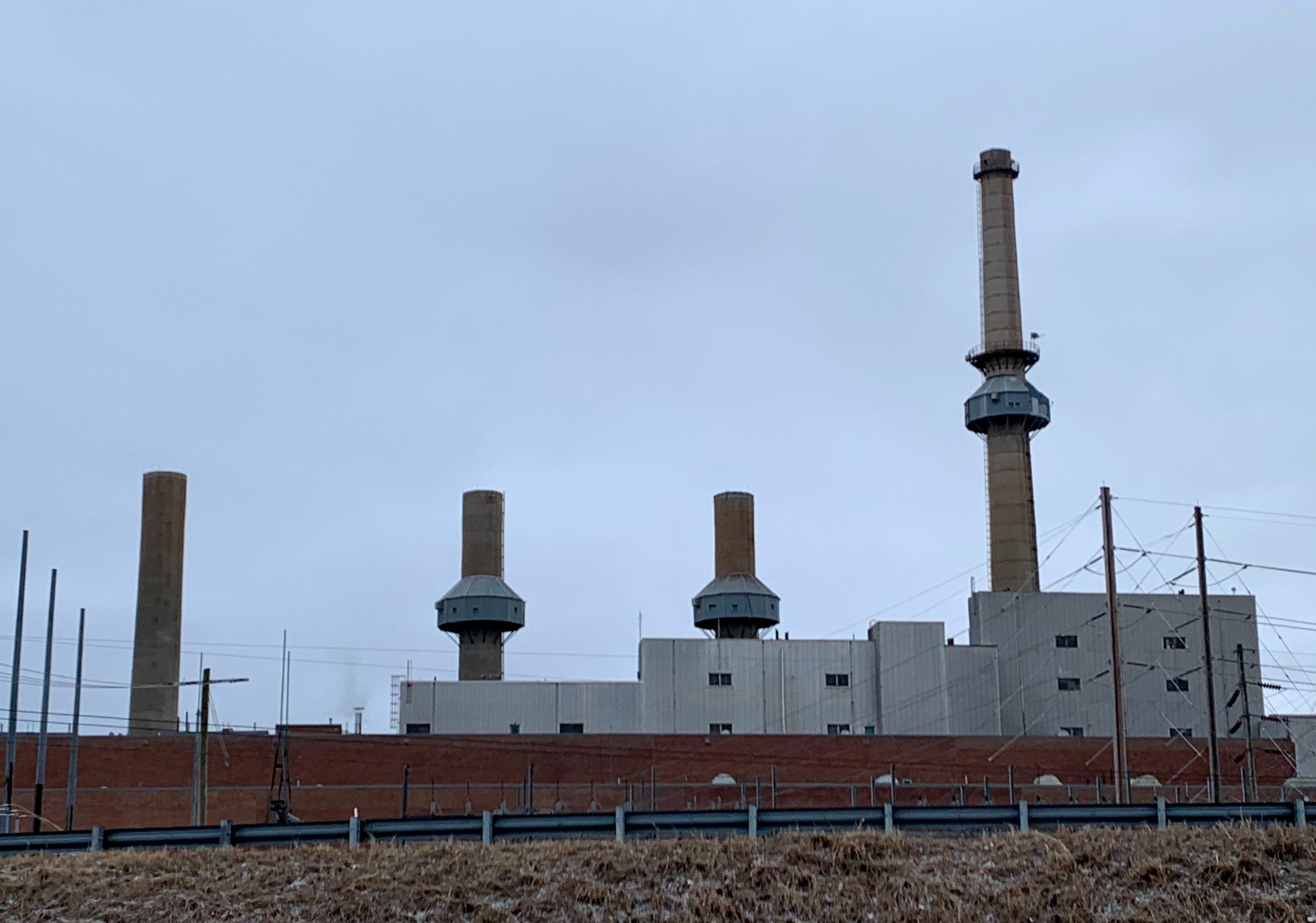Some of us have dreamed about the rush of pushing a large button or flipping a lever wired to hundreds of pounds of explosives. One man lived the dream just before his retirement.
Longtime Springfield City Utilities employee Matt Kastner pushed the button to detonate the explosives that took down four exhaust chimneys at the James River Power Station on Feb. 19, as a small crowd of onlookers watched from a distance and hundreds more watched from home.
As 9 a.m. approached, onlookers started counting down from 10. When they got to zero, nothing happened. Some people laughed. Then seconds later, the stacks trembled. It took approximately 12 seconds from the first puff of smoke until the stacks lay completely on the ground.
The raffle winner

Melinda “Mindy” Pew was the winner of the raffle to push the button in United Way’s Blasting for the Better, a fundraiser tied to the planned implosion of the exhaust chimneys that were taken offline between 2007 and 2017. She lives in California, but told the folks from City Utilities that she already had a plan to fly to Springfield to watch the implosion. That's because her brother, Kastner, spent 43 years of his life working at the power plant.
Kastner is the manager of power generations operations at the James River Power Station and has worked at the plant since the late 1970s. Pew surprised her brother by telling him that she wanted him to be the one to push the button and drop the stacks.
“I am passing the ability to push the button off to you. It is only fitting,” Pew told Kastner.
Kastner was shocked and said he couldn’t believe it.
“I don’t show emotions very often, but this is cool. It could not have been any better,” Kastner said.
Springfield City Utilities President Gary Gibson said it was a bit unusual to turn a demolition project into a spectacle with a fundraiser, but that in this case, it worked.
“‘Blasting for the Better,’ I think, is kind of a neat term. Blasting for Better is that we’re going to continue to better our community,” Gibson said.
Greg Burris, President of United Way of the Ozarks, thanked City Utilities for working with United Way to raise $9,075 through raffle ticket sales that led to Kastner being the lucky one to push the button.
“How many times do you get an opportunity to do something like this in a community and turn it into a fundraiser?” Burris said. “City Utilities has been a great partner of United Way, they are our No. 1 campaign in our community and we have partnered with them on a number of things, but they really exemplify what it means to show community ownership.”
The money will go into the United Way of the Ozarks grant program.
“It will be invested into our community in two areas, two primary areas of championing children and pathways out of poverty,” Burris said.
“It’s pretty amazing to think about the last 65 years and how impactful this power station has been to our community, and the more I think about it, the story here is not so much the plant, but it’s the people who have spent the last 65 years working here to keep a power station like this operating for our community,” Gibson said.
Up with the sun to watch the implosion

Spectators parked their cars and staged to see the implosion well before 7 a.m. on Feb. 19.
Taylor DeYoung and Chance Black watched the implosion together from a vantage point on the north side of Lake Springfield. Hundreds of people parked their cars in Lake Springfield Park and watched from a hillside. DeYoung said that she had visited the park near the power plant many times.
“He and I have gone kayaking down here on the lake. We've come out here and seen it before, and then found out that they were bringing down the stacks and thought it would be cool. It's something you don't see every day, so it was unique,” DeYoung said.
DeYoung and Black were at the park with Kevin, whose last name is being withheld because he is a minor. Kevin was about to turn 14 the day after the implosion.
“It's his birthday tomorrow, so I asked him, ‘Would you be interested in this?' He's like, ‘Yeah,'” DeYoung laughed.
Kevin simply said he was excited “to see them explode,” and then perhaps have some pancakes later that day to celebrate.
The group initially tried to watch from the City Utilities property to the south of the power plant, but when they were told that the parking area was full, they decided to go to Lake Springfield Park instead.
“We knew we could come down here, at least,” DeYoung said.
“She didn't wake me up in time to get to the top of the hill over there,” Black deadpanned, pointing to the hill to the south of the power plant.
Josh and Kayla Harcourt sipped coffee and stood atop a hill overlooking the lake. They arrived early, and found that they weren't alone in their decision to watch the implosion from Lake Springfield Park.
“We were very surprised, we didn't think people would care as much,” Kayla Harcourt said of the turnout.
“I was like, ‘We'll be smart and go to the pavilion,' because people won't think about that. Well, we were wrong,” Josh Harcourt said.
“Everybody thought about that,” Kayla Harcourt added.
An avid angler, Josh Harcourt wanted to see how the landscape of one of his favorite fishing spots would forever change.
“I came to Springfield about eight years ago, and I love fishing on Springfield Lake. I've seen these towers thousands of times,” Josh Harcourt said.
Kayla Harcourt said the spectacle also appealed to an urge “to see something cool that you don't see every day, an explosion,” while Josh looked forward to seeing the work and calculations of the demolition contractor in action.
“I am sure someone is paying these people a lot of money,” Josh Harcourt said.
Safety first

Spirtas Wrecking Company General Superintendent David Gaines oversaw the design of the implosion for all four stacks, plus all of the site teardown work that has taken place at the power plant over the past four months. It wasn’t one big explosion, but several carefully-designed small explosions that brought down each chimney.
“It’s about placement, it’s about timing. There is a lot of timing that goes into it,” Gaines said.
Not all of the explosions went off at the same time. They are timed a second, or even milliseconds apart, in order to control the way that the chimneys fell to the ground.
The rule of thumb for demolitions experts is that no two jobs are the same. Each comes with its own challenges, whether it’s the lay of the land, nearby structures that must be preserved, environmental issues or some combination of all of them. Safety and regard for human life is the top priority.
“Our No. 1 goal is to make sure that nothing happens to anybody — our employees, the public, anybody,” Gaines said.
Towers or exhaust stacks can be taken down by methods that don’t involve explosives, but Gaines said that implosion made sense as the most effective choice at the Springfield power plant.
“Implosions are safer than some sorts of conventional demolition. We assess that every time,” Gaines said. “We always assess, ‘Can we do it safer with a piece of equipment, or can we do it safer with explosives? Can we do it safer with cables, with cranes?’ We always take them into consideration, and in this instance, it was safer to do it with explosives.”
Though the power plant sits next to Lake Springfield, Gaines said there was no danger of any concrete or bricks from the chimneys ending up in the water.
“We’ve actually done (implosions) a lot closer to waterways, major, large-traffic rivers and things like that. Out here, we have zero concern with anything making it remotely close to the lake,” Gaines said.
Future of the power plant

Generation still happens at the James River Power Station. Most of City Utilities’ power is made at the John Twitty Energy Center, a two-unit coal-fired power plant on West Farm Road 1644, just southeast of the interchange of U.S. Highway 60 and West Sunshine Street. The John Twitty plant has a capacity of 503 megawatts of generation.
The James River plant still has two natural gas-fired generation units, which have been in service since 1964 and 1970, respectively. Those natural gas generators will continue to make electricity.
“This plant is not done. This is still an operating plant, we still have combustion turbines that are in operation out there, so this is a functioning plant, but this is the end of an era,” Gibson said.
On Feb. 10, the federal Economic Development Administration (EDA) announced that Springfield would receive an $800,000 grant to study the redevelopment of Lake Springfield following the removal of the power plant. The grant is funded through the $300 million Coal Communities Commitment through the American Rescue Plan Act.
“I just think there is so much opportunity out here to make this a great place to celebrate our history, but also to make it a place where people can come and expand our recreation opportunities that we have out here,” Gibson said.
In 2020, City Utilities had a total of 117,075 customers from the residential, commercial and industrial sectors. City Utilities self-reported that 23 percent of the power its customers consumed in 2020 came from coal-fired generation, while 3 percent came from natural gas.
About 45 percent of the power in City Utilities’ portfolio comes from what the Federal Energy Regulatory Commission classifies as renewable energy sources.
“One of the things I like to brag about is our renewable percentage. I think we lead the state in our ability to produce energy for our customers through non-carbon sources, and we’ll continue to look at that,” Gibson said.
Springfield will be required to meet an 80-20 match requirement for the economic study grant, which means $200,000 in local funding will be required to study the site and propose solutions for its development. The Hatch Foundation, a Springfield community enrichment organization formed in 2019, contributed $100,000 to the study. Springfield City Utilities will contribute $60,000, and the Springfield Environmental Services Department will pay $60,000.




